Mulch has numerous benefits to the plants e.g. preventing soil erosion, regulating heat, and controlling moisture. This is the reason for its popularity, but which is the best mulch for grow bags is difficult to determine. There are various types of mulch, each costing differently, and all have their plus points and flaws.
We bring you this guide which will cover which mulches to use or not use with vegetables, and what to consider when buying it. We will share tips, burst myths about mulch, and most importantly list the top 3 mulches you should try, along with their pros and cons.
So let’s not waste any time and for the sake of making your plants happy read on!
Contents
3 Best Mulches for Container Gardening – Overview
1. EZ-Straw Seeding Mulch
EZ Straw is loved by gardeners and their plants but it is especially great for beginners because its bale covers a massive area of 500 square feet.
It is an organic mulch and is biodegradable. This helps a lot as you will not have to clear it away once the seed is seated like with plastic mulch. Its signature feature is the tack-bonding. The straw sticks together which promote germination and eliminates weeds.
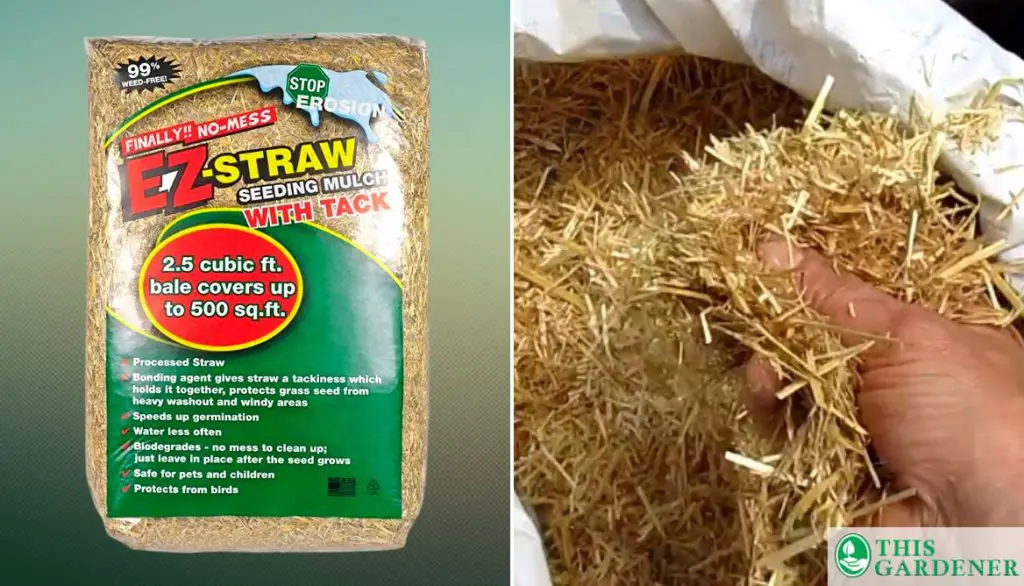
Dimensions: | 24 x 16 x 9 inches |
Weight: | 46 pounds |
Made: | Organic Straw |
- Tackifier encourages enhanced germination.
- Safe for children and pets
- Protects seeds against heavy winds and washouts
- UV-resistant packaging.
- Decomposing can take time.
2. National Cocoa Shell BLCH001 Blommer Cocoa Shell Mulch
This mulch is made from Cocoa bean husks and has 0 additives. It allows soil permeability so it absorbs water, drains the excess, and lets in sufficient air preventing it from turning soggy and harming roots.
It is a dry organic mulch and does not bleach nor it packs.
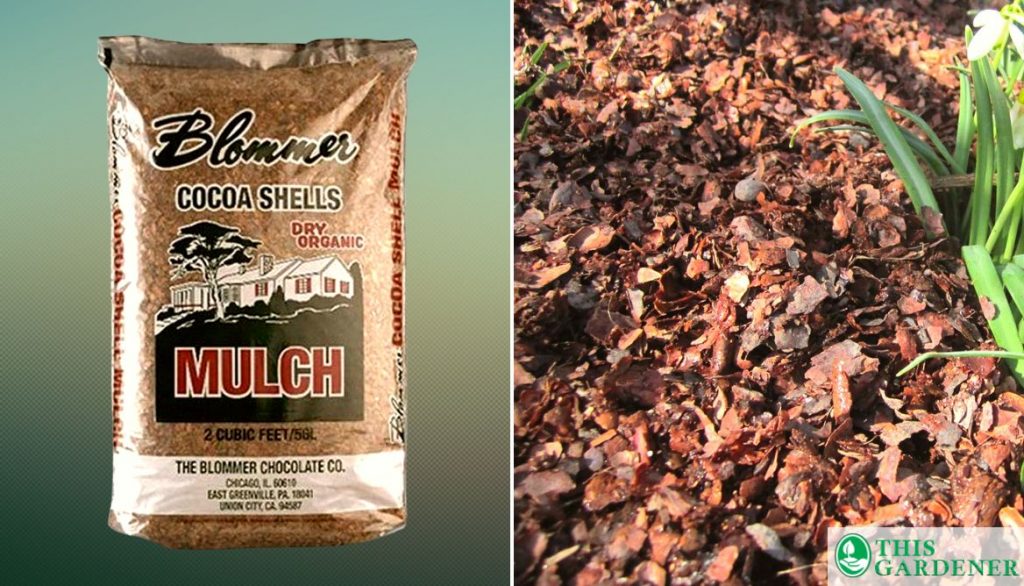
Dimensions: | 34 x 23 x 6 inches |
Weight: | 26 pounds |
Made: | Coconut husks and fiber |
- Chocolate scented.
- Insulates plant roots and prevents weeds.
- Listed by Organic Materials Review Institute
- A beautiful brown color that gets darker with age.
- Can grow mold if unexposed to proper sunlight.
3. SPONGEEASE Coco Fiber Mulch
This is an organic mulch block that expands up to 50% when water is poured on it. It is made up of crushed coconut husks and is completely organic.
It retains soil moisture but not in excess. It can stay alive for many seasons and has a subtle pleasing smell.
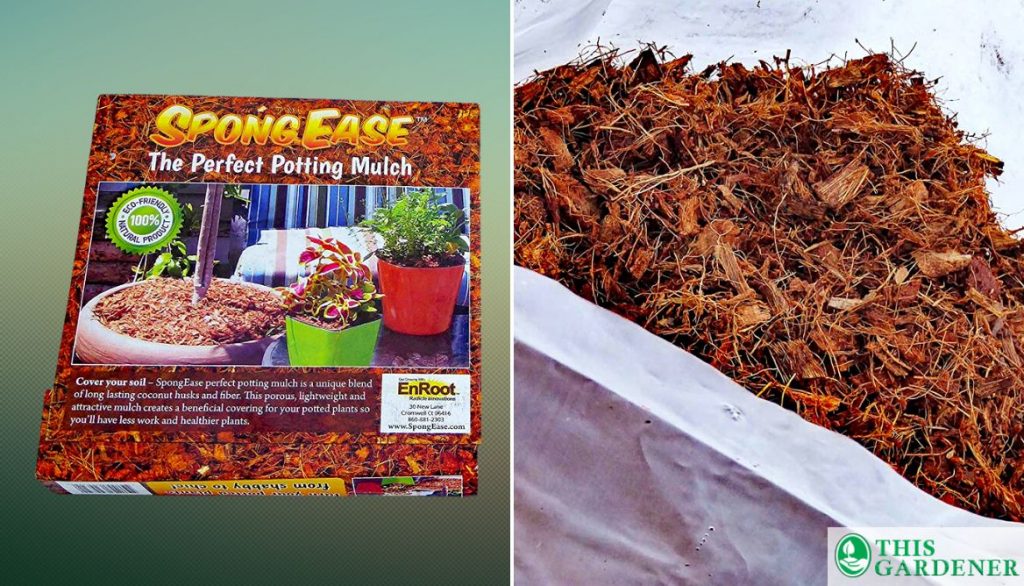
Dimensions: | 7.25 x 7.25 x 1 inches |
Weight: | 0.8 pounds (12.8 ounce) |
Made: | Cocoa Shell |
- Unlike shredded bark, it stays in place.
- Biodegradable.
- Prevents weed growth.
- Made to long-last.
- Some find it hard to break apart.
Mulch Matters
Mulch is beneficial to the plant for a list of reasons. A few of them are as follows.
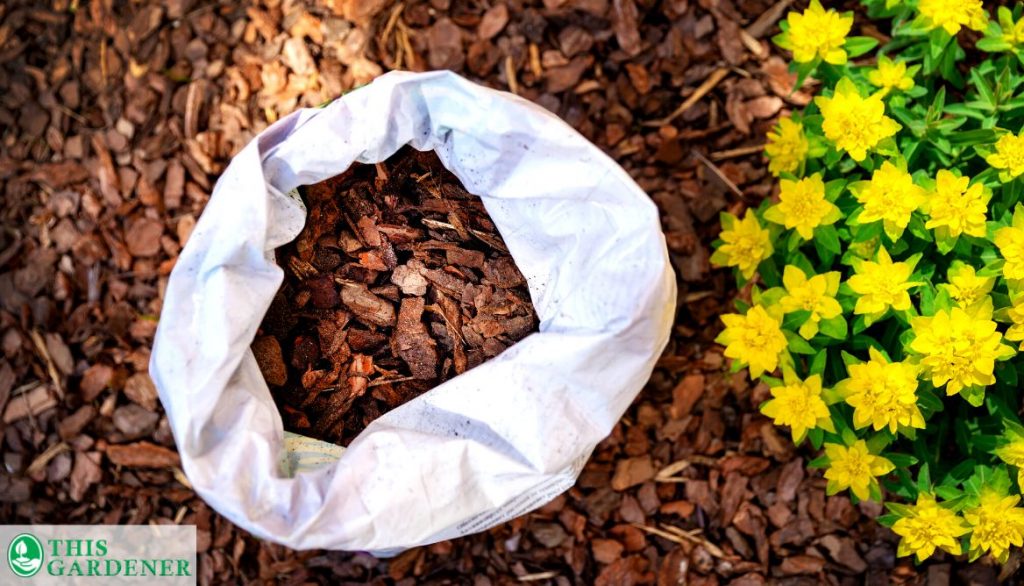
- That Mulches prevent weeds to grow.
- Helps to retain garden soil moisture.
- Beautifies soil surface.
- Grass clippings-based mulch cools the root zone.
- Maintains soil temperatures.
- The mulch layer contains the nitrogen needed for the vegetable garden.
- Create organic matter for healthy soil.
However, many people have reservations about it because of what they have heard. Unsurprisingly, most of its “flaws’ are myths. Let us burst those now.
Three Myths About Mulch
There are different types of garden mulch and each has its own way of usage, pros, and cons this is why it is possible to get mixed up. This is how the myths emerge, fortunately, we will disqualify some. Here we go.
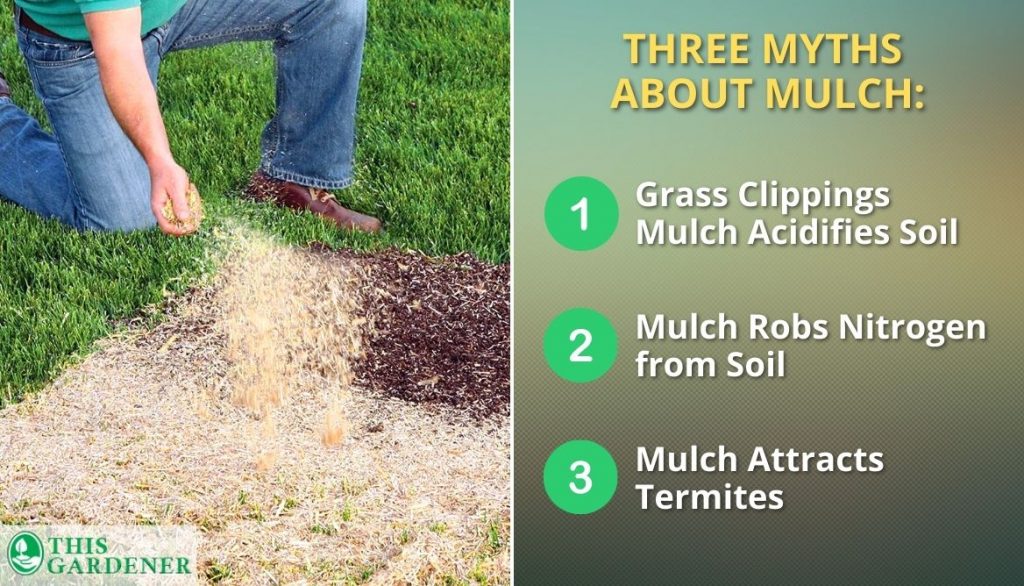
1. Grass Clippings Mulch Acidifies Soil
This myth could be because pine needles, shredded leaf mulch material, and pine bark do slightly nudge the pH but most plants remain unaffected. We advise you to not worry about it.
2. Mulch Robs Nitrogen from Soil
This myth comes from wood chips mulches using nitrogen to decompose. This happens only when the mulch is on meets the soil surface but the roots are deep so they are safe. Once it decomposes, it actually releases the nitrogen back into the soil in abundance.
If you still fear this, you can spread a layer of granular fertilizer which is ‘slow-release’ to protect shallow roots.
3. Mulch Attracts Termites
The myth probably arises from termites eating rotten logs and lumber. There is not much to be anxious about as bark mulch is tough for termites to chew through and digest.
Besides this, the process to set the layer of mulch requires transportation, shredding, and bagging which will not let termites make it to your home from the local garden center.
What to Consider When Selecting Mulch?
To have the best results from mulch you need to understand why the following are important to keep in mind so let’s study these quickly.
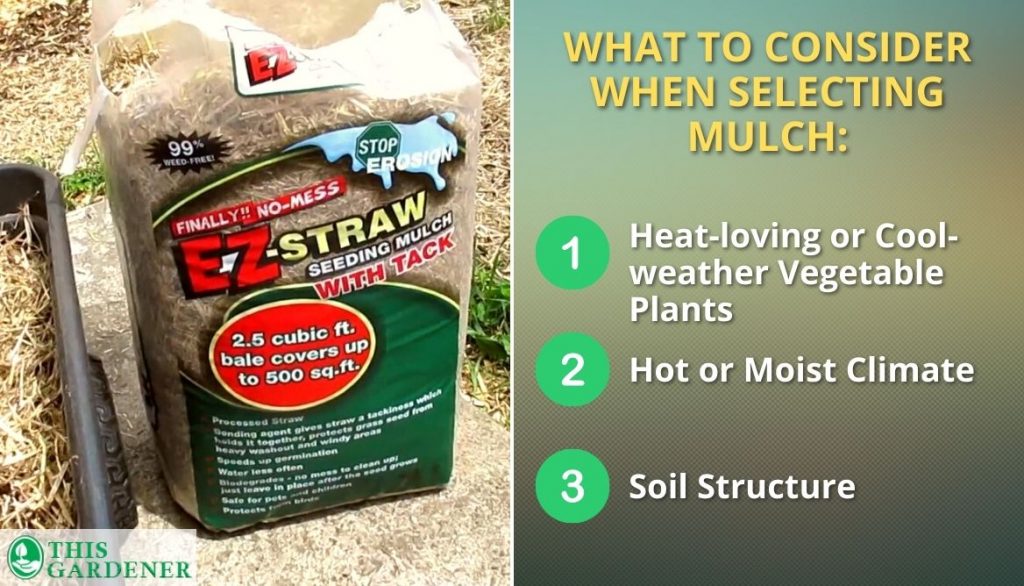
1. The Crop
Every crop is different and we need to tend to its needs accordingly. Let’s look at how we take care of these in the best way.
Heat-loving Vegetable Plants
Heat-loving vegetables are well suited for black plastic mulches. It will make the soil temperature high because the black plastic mulch keeps the soil warm as well as the air around the plants.
However, use these in early spring only during growing season. In summer it won’t retain moisture and stress the plants such as leading the tomatoes to rot. To solve this either remove the plastic mulch in June or build an irrigation system to keep the soil texture moist.
Cool-weather Crop
Cold-weather plants such as salad greens and broccoli do not require heat so shredded leaves, grass clippings and other organic mulches made of paper will be the right mulch for these.
2. Weather
The important factor is the weather and climate where you will use mulching. Let’s dive in details.
Hot Climate
If you live in a hot climate using inorganic mulches made of plastic would harm the plants. To avoid soil temperatures increasing use mulches with organic matter such as grass clippings, and shredded leaves and prevent compaction.
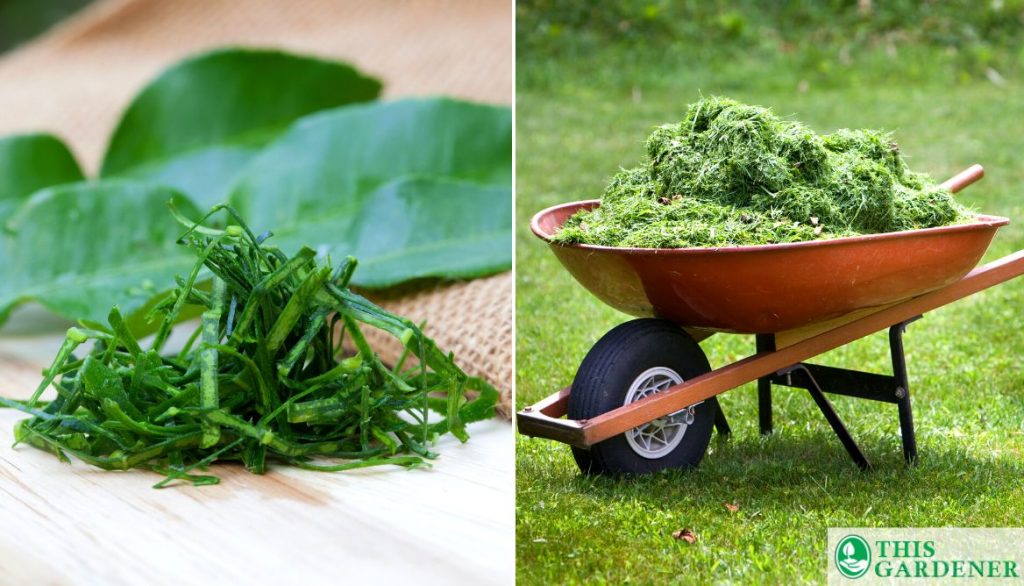
Moist Climate
If you live in a hotter but humid climate you have to protect the soil from too much moisture. The roots can rot, and slugs can eat up the plant. It would help if you used cool mulches but not without drying the soil first. You can use plastic mulch in early spring only.
3. Soil Structure
Soil structures should be considered when laying the mulch. Moist, cool soil is not ideal for vegetable gardens. If you cover it with a black plastic mulch it can block excess moisture but removal is important before the season progress because the same soil will dry and need rain.
Six Tips for Using Mulch for Plant Roots
Now gear up for six valuable tips when using the mulch for plant root experts agree on for your beloved vegetable garden.
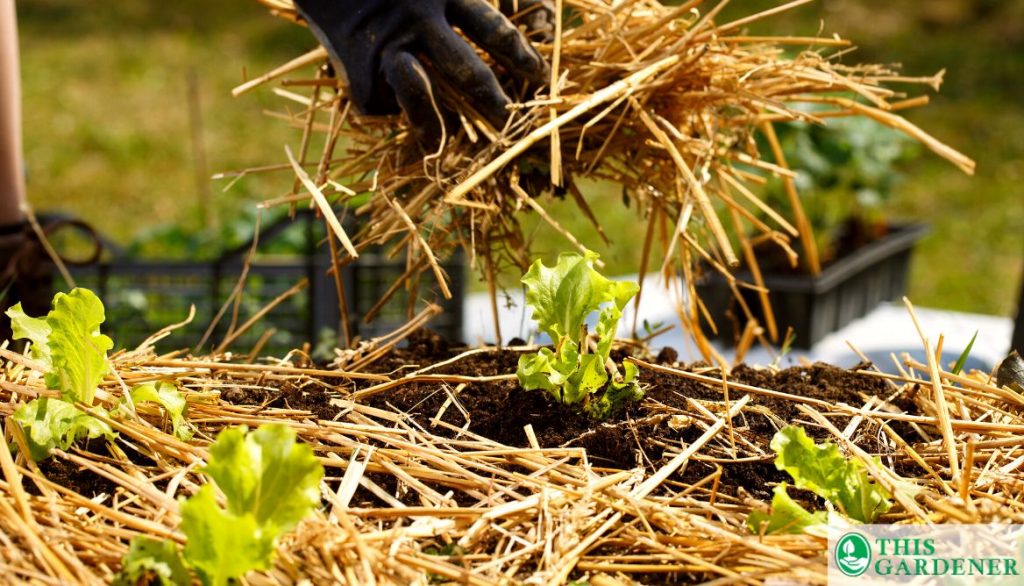
- Spread the mulch in a way that the stem has at least 1 inch of space to prevent fungus.
- Grass clippings have an abundant amount of nutrients so use them generously.
- If the mulch has been treated with pesticide do not use it. Grass-based mulches should be kept in the sun before use as a preventive major.
- It is suggested that shredded leaves are at least aged over 9 months so every bit of phenols is utilized.
- You can hold down plastic mulch with earth staples.
- Apply nitrogen-rich fertilizer below the mulch’s layer to neutralize as organic mulches can decrease it.
Advantages of Organic Mulch for Vegetable Garden
There are numerous advantages of Mulch. Here is why you should use it.
- Vegetables are able to absorb nutrients and water fully as it does not let weed seeds grow.
- It reduces soil-borne diseases in plants. It acts as a fence and prevents soil splash so the organisms that can rot the vegetables are not able to reach the plants.
- It protects the plants from harsh winter by serving as a blanket layer while also keeping the soil cool by not letting the direct sun hit it.
- It keeps the soil intact and prevents erosion or runoff.
- It helps retains moisture so the plant does not face drought-like situations.
Mulches to Avoid in Vegetable Garden
Not all types of mulch are suitable for vegetable gardens. Avoid using the following ones.
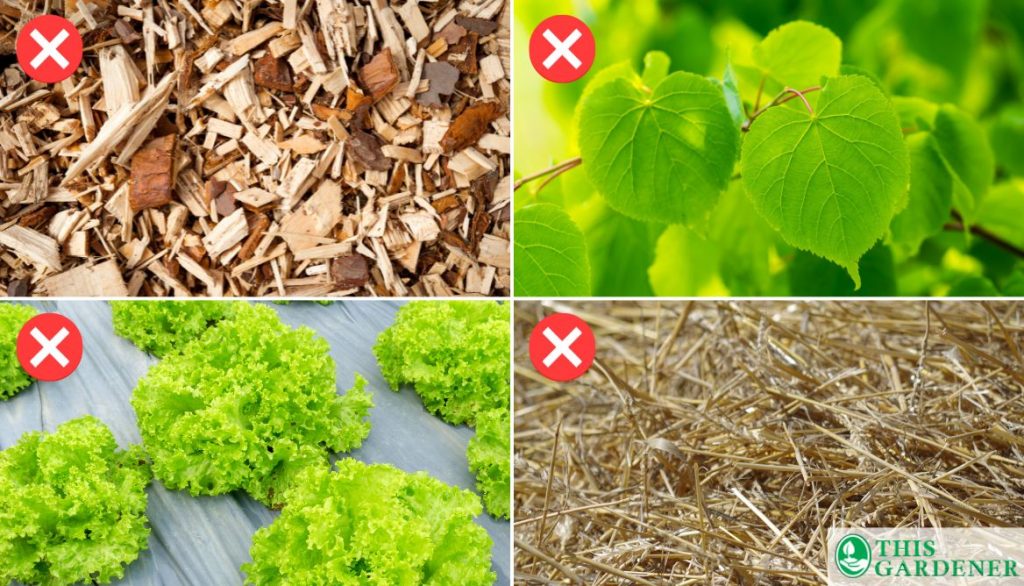
- Wood chips, pine needles’ barks, and sawdust could be bad for small root plants as these suck nitrogen when they come in contact with the soil.
- Whole leaves could result in excess moisture that will lead to rot and form fungus. Better to use dried leaves or freshly chopped leaves
- With the exception of grain seed-free hay/weed-free salt hay, it is recommended to use straw over hay.
- Inorganic mulch made of clear plastic does not suppress weeds and heats up the soil so avoid using it in your vegetable garden as it is of no benefit.
FAQ
What is the Best Mulch for Plants?
Oat straw and shredded leaves are great for plants. You can use wood chips for plants with long roots and black plastic mulch for heat-loving vegetables.
What Kind of Mulch is Best for Raised Beds?
Grass clippings, pine needles, and straw are considered the best types of mulch for garden bed soil.
Which Mulch Lasts the Longest?
Landscape fabric, black plastic, and rubber are the long-lasting mulch types.
Which is Better Mulch or Compost?
Both are necessary. Use mulch to control weeds, protect against harsh weather, and retain moisture. Use compost to provide nutrients to the soil.
Which is the Main Disadvantage of Mulching?
The inorganic mulches made of black plastic can overheat the plant, wood chips can reduce nitrogen from the soil surface, and if mulch is used in excess it can suffocate the plant.
Conclusion
There you go! Our top picks along with what advantages of mulch and which mulches to avoid.
If we had to pick the best mulch however we would choose EZ Straw Seeding Mulch. It is easy to use so beginners can start with it, it’s biodegradable, has a tackifier, and most importantly straw mulch has can be used with most plants without much worry of harming them.
We hope you utilize our guide and grow healthy, full of nutrients veggies, and herbs. Share in the comments about which mulch and tip are you planning to use.
- How to Get Potatoes to Sprout Eyes: Detailed Growing Guide with 3 Options - July 31, 2023
- Weight of a Medium Potato: Revealed in Detailed Guide - July 29, 2023
- Maris Piper Potatoes: 9 Substitutes You Should Know About - July 27, 2023
Hello! I’m Jessica Zander, a garden coach and consultant based in the Boston area (zone 6b), offering virtual consultations across the country and Canada.
I’ve been passionate about gardening since the early 1990s, and in 2022, I launched You Can Do It Gardening to empower individuals to feel more confident in their gardening endeavors.
Following a 30-year career in nonprofit finance and operations, I transitioned out of that field in mid-June of 2023 due to the growing demand for coaching services. Interestingly, my years of presenting financial statements to boards and finance committees proved to be valuable experience for teaching people about gardening! I enjoy sharing skills, providing guidance and suggestions, and collaborating efficiently with clients to make significant improvements to their outdoor spaces, both small and large. I also regularly teach at the Arlington Continuing Education and Cambridge Adult Education.
My approach is direct and practical, akin to Mary Poppins, but tailored to your garden. Clients find satisfaction in saving money and taking pride in their own gardening achievements.

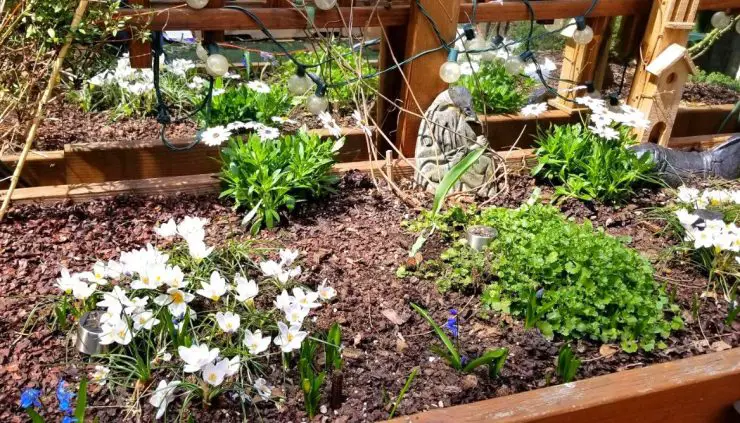




Add comment